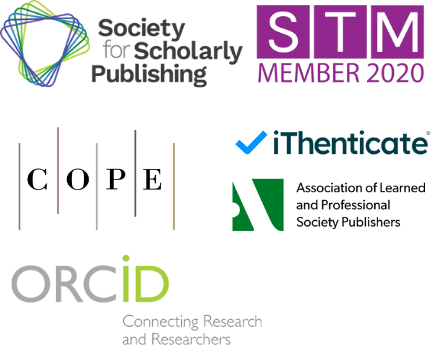Contemporary Research on Interdisciplinary Professional Development Methods
DOI:
https://doi.org/10.71222/pwcqsw81Keywords:
professional development, interdisciplinary learning, technology integration, workplace learning, digital transformation, competency frameworkAbstract
Contemporary professional development increasingly demands interdisciplinary approaches that transcend traditional sectoral boundaries. This paper examines emerging methods and frameworks for enhancing professional competencies across diverse fields, with particular emphasis on technology-driven efficiency, project management innovation, and post-pandemic professional adaptation. The research investigates how digital transformation initiatives, collaborative learning environments, and competency-based training models contribute to workforce advancement in rapidly evolving industries. Through systematic analysis of contemporary practices, this study identifies critical success factors including technological integration, cross-functional collaboration, and adaptive learning strategies. The findings reveal that effective professional development programs incorporate blended learning modalities, real-time performance analytics, and industry-specific customization while maintaining transferable core competencies. This research contributes to understanding how organizations can design and implement sustainable professional development systems that respond to changing market demands, technological disruptions, and evolving workforce expectations. The implications extend to policy formulation, organizational strategy, and educational curriculum design for professional training programs.
References
1. S. Broek, J. van der Linden, M. A. C. T. Kuijpers, and J. H. Semeijn, “What makes adults choose to learn: Factors that stimulate or prevent adults from learning,” Journal of Adult and Continuing Education, vol. 29, no. 2, pp.620-642, 2023, doi: 10.1177/14779714231169684.
2. S. Yang, “The Impact of Continuous Integration and Continuous Delivery on Software Development Efficiency,” Journal of Computer, Signal, and System Research, vol. 2, no. 3, pp. 59–68, Apr. 2025, doi: 10.71222/pzvfqm21.
3. M. Olsen and R. Jentoft, “Developing professional competence in an unfamiliar setting: Practice learning in Zambia,” Scandinavian Journal of Occupational Therapy, vol. 30, no. 7, pp. 1122–1134, 2023, doi: 10.1080/11038128.2023.2208762.
4. Y. Liu, “Post-pandemic Architectural Design: A Review of Global Adaptations in Public Buildings,” International Journal of Engineering Advances, vol. 2, no. 1, pp. 91–100, Apr. 2025, doi: 10.71222/1cj1j328.
5. P. Han, L. Wang, Y. Song, and X. Zheng, “Designing for the post-pandemic era: Trends, focuses, and strategies learned from architectural competitions based on a text analysis,” Frontiers in Public Health, vol. 10, p.1084562, 2022, doi: 10.3389/fpubh.2022.1084562.
6. F. M. Schnepfleitner and M. P. Ferreira, “Transformative Learning Theory – Is It Tıme to Add A Fourth Core Element?,” Journal of Educational Studies and Multidisciplinary Approaches, vol. 1, no. 1, pp. 40–49, 2021, doi: 10.51383/jesma.2021.9.
7. S. Jing, "Practice of digital construction to improve construction project progress management," Academic Journal of Engineering and Technology Science, vol. 8, no. 2, pp. 36–44, 2025, doi: 10.25236/AJETS.2025.080205.
8. M. Abdullah, R. Yunus, Yaser Gamil, and Mohammed Abdo Albaom, “Enhancing construction site performance through technology and management practices as material waste mitigation in the Malaysian construction industry,” Heliyon (Londen), vol. 10, no. 7, p. e28721, 2024, doi: 10.1016/j.heliyon.2024.e28721.
9. H. H. Dagou, A. P. Gurgun, K. Koc, and C. Budayan, “The Future of Construction: Integrating Innovative Technologies for Smarter Project Management,” Sustainability, vol. 17, no. 10, p. 4537, 2025, doi: 10.3390/su17104537.
10. P. Tynjälä, “Perspectives into learning at the workplace,” Educational Research Review, vol. 3, no. 2, pp. 130–154, 2008, doi: 10.1016/j.edurev.2007.12.001.
11. S. Billett, “Learning through work: workplace affordances and individual engagement,” Journal of Workplace Learning, vol. 13, no. 5, pp. 209–214, 2001, doi: 10.1108/eum0000000005548.
12. A. Mitschelen and S. Kauffeld, “Workplace learning during organizational onboarding: integrating formal, informal, and self-regulated workplace learning,” Frontiers in Organizational Psychology, vol. 3, p.1569098, 2025, doi: 10.3389/forgp.2025.1569098.
13. Päivi Tynjälä, “Workplace Learning from the Organizational Point of View,” Professional and practice-based learning, pp. 429–450, 2022, doi: 10.1007/978-3-030-89582-2_20.
14. G. Wang, "Performance evaluation and optimization of photovoltaic systems in urban environments," Int. J. New Dev. Eng. Soc., vol. 9, pp. 42–49, 2025, doi: 10.25236/IJNDES.2025.090106.
15. S. H. Lim, L. Lim, C. Y. Lye, and W. Y. R. Lim, “Personalised Professional Development in Teaching and Learning in Higher Education,” Trends in Higher Education, vol. 4, no. 2, p. 16, 2025, doi: 10.3390/higheredu4020016.
16. T. Fenwick, “Understanding Relations of Individual—Collective Learning in Work: A Review of Research,” Management Learning, vol. 39, no. 3, pp. 227–243, 2008, doi: 10.1177/1350507608090875.
Downloads
Published
Issue
Section
License
Copyright (c) 2025 Ming Gao, Jie Huang, Rui Qian (Author)

This work is licensed under a Creative Commons Attribution 4.0 International License.


